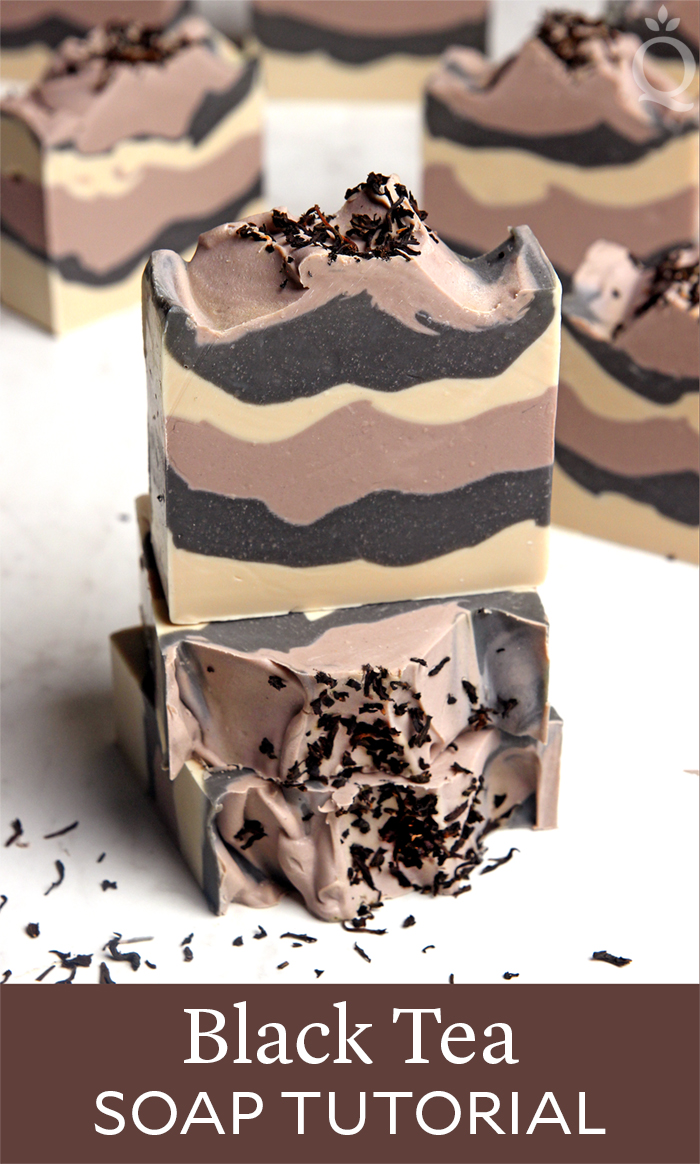 Black tea has been renowned for centuries as a potent source of powerful antioxidants. This Black Tea Cold Process Soap recipe harnesses those properties by replacing water with black tea. It’s also scented with the new Bergamot Black Tea Fragrance Oil. The fragrance is a complex blend of smoky tea leaves and bright bergamot with a subtle base of amber. It’s a fantastic uni-sex fragrance oil.
Black tea has been renowned for centuries as a potent source of powerful antioxidants. This Black Tea Cold Process Soap recipe harnesses those properties by replacing water with black tea. It’s also scented with the new Bergamot Black Tea Fragrance Oil. The fragrance is a complex blend of smoky tea leaves and bright bergamot with a subtle base of amber. It’s a fantastic uni-sex fragrance oil.
If you’ve never replaced water in your recipe with tea, it’s easier than you think. Simply brew the tea, allow it to cool and mix in the lye like you would with water. The lye solution will become a dark brown, so this recipe contains titanium dioxide to lighten the color. Purple Brazilian clay adds a natural purple hue, while activated charcoal gives a deep grey color.
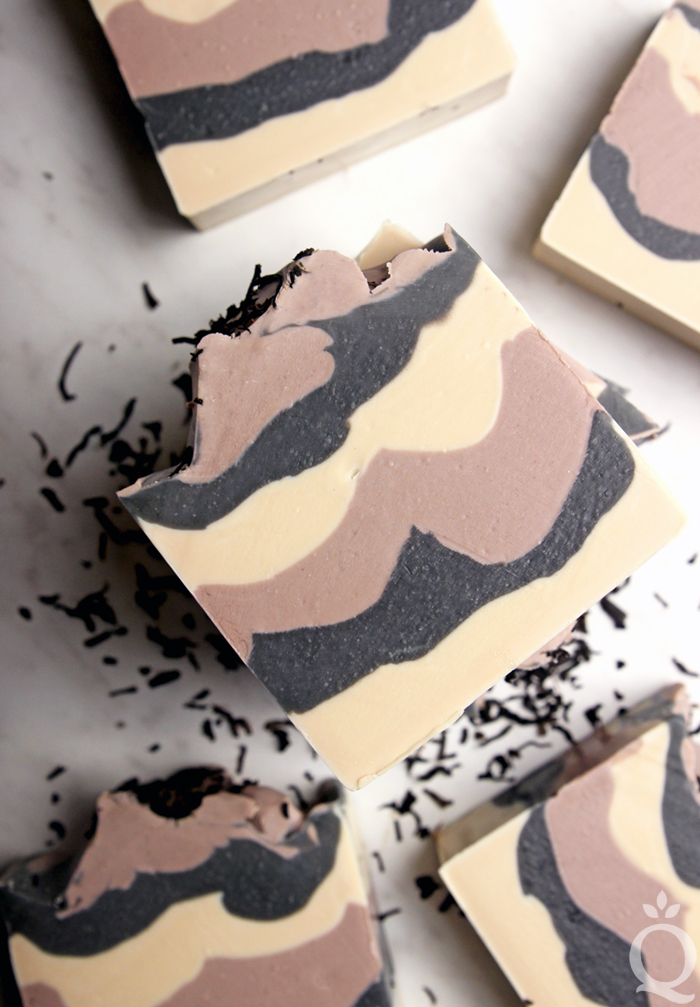
Because this recipe does contain plenty of titanium dioxide, it has a 20% water discount. The first time we made the soap without a water discount, we got a lot of glycerin rivers (Learn more about glycerin rivers here.) The water discount — or in this case, tea discount — eliminated them completely. The discount also helps to achieve a thick, easy-to-layer texture.
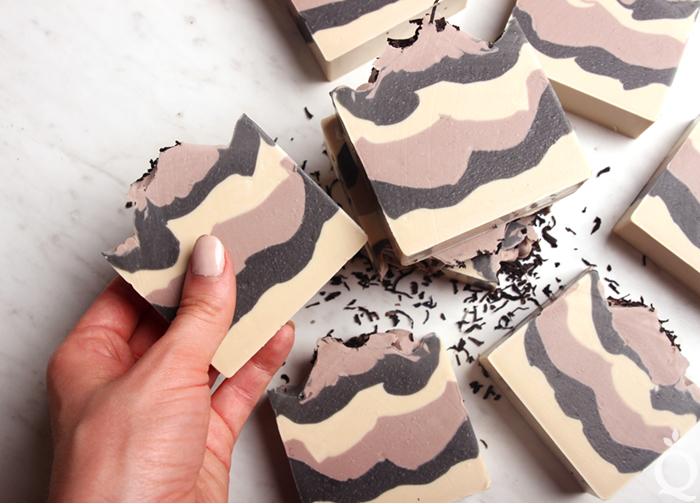
What You Need:
5 Pound Mold with Sliding Bottom
Silicone Liner for 5 Pound Mold
2.7 oz. Cocoa Butter (5%)
13.5 oz. Coconut Oil (25%)
2.7 oz. Matcha Green Tea Butter (5%)
16.2 oz. Olive Oil (30%)
13.5 oz. Palm Oil (25%)
5.4 oz. Sweet Almond Oil (10%)
14.3 oz. Brewed Black Tea (20% water discount)
7.6 oz. Sodium Hydroxide Lye
2 oz. Bergamot Black Tea Fragrance Oil
Titanium Dioxide
Activated Charcoal
Purple Brazilian Clay
Black Tea Leaves (for the top & to brew tea)
Large Sealable Tea Bag (for brewing tea)

Click here to add everything you need for this project to your Bramble Berry shopping cart!
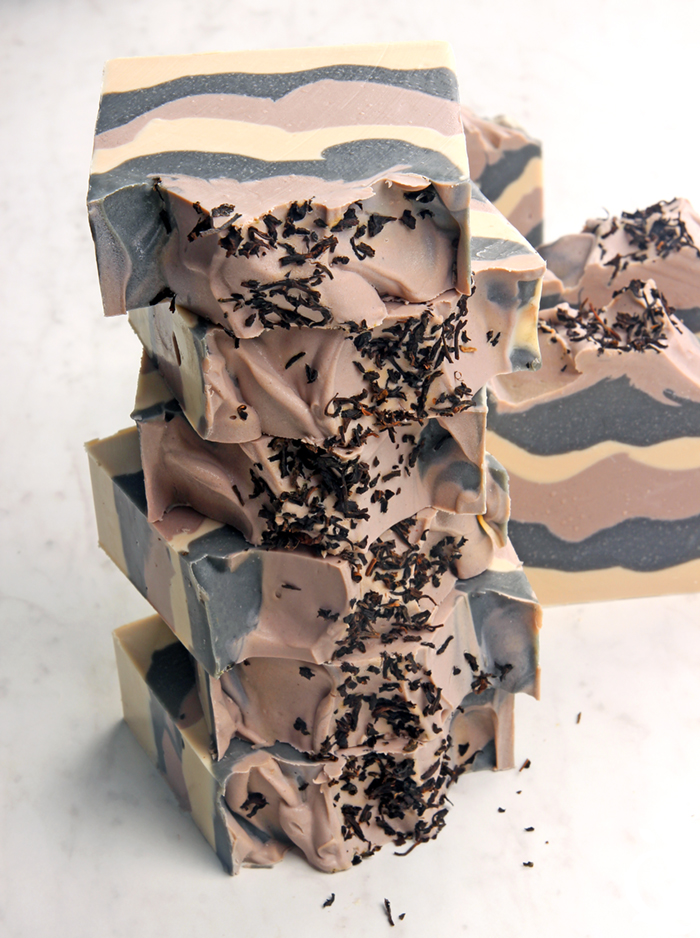
If you’ve never made cold process soap before, stop here! I highly recommend checking out our FREE four part SoapQueen.tv series on Cold Process Soapmaking, especially the episode on lye safety. Or if you’d prefer to read, Bramble Berry carries a wide range of books on the topic, including my newest book, Pure Soapmaking. You can also checkout the digital downloads for that instant gratification factor.
SAFETY FIRST: Suit up for safe handling practices! That means goggles, gloves and long sleeves. Make sure kids, pets, and other distractions and tripping hazards are out of the house or don’t have access to your soaping space. Always soap in a well-ventilated area.
COLOR PREP: To ensure that the titanium dioxide blends smoothly into the soap batter, we recommend micronizing it before dispersing it in oil. Please note this is an optional tip but it does help with the titanium dioxide clumping in the soap.To micronize colorant, simply use a coffee grinder to blend the colorant to break up any clumps of color and prevent streaks of white from showing in the final soap. We like to use a coffee grinder that has a removable, stainless steel mixing area for easy cleaning. Then, disperse 3 teaspoon of the colorant into 3 tablespoons of sunflower or sweet almond oil (or any other liquid oil). Disperse 1 teaspoon of activated charcoal into 1 tablespoon of liquid oil. Use a mini mixer to work out any clumps. Then, disperse 3 teaspoons of purple Brazilian clay into 3 tablespoons of distilled water. Because clays absorb moisture, we recommend dispersing them in water rather than oil. Use a mini mixer or small spoon to disperse the clay.
FRAGRANCE PREP: Measure 2 ounces of Bergamot Black Tea Fragrance Oil into a glass container that is safe for use with fragrance oil. Set aside.
BLACK TEA PREP: First, boil 16 ounces distilled water to prepare the tea. It’s best to prep more tea than you need, because you will lose some during the steeping process. Add 4 tablespoons of black tea into the Large Sealable Tea Bag. If you’d like the tea to be stronger or lighter, you can use more or less tea. Iron the tea bag closed, and place in the hot distilled water.
Allow the tea to steep and cool for about 1 hour. Remove the tea bag and wait for the tea to cool to about 70 ° F. The cooler the mixture, the lighter the color of the lye mixture will be.If you’d like, you can also freeze the tea and add the lye to the frozen tea, similar to adding lye to milk, as shown here.
Measure out 14.3 ounces of tea. If you don’t have enough, add more distilled water. Save the tea leaves to place on top of the soap if you’d like. Place them on a paper towel to dry until you’re ready to use.
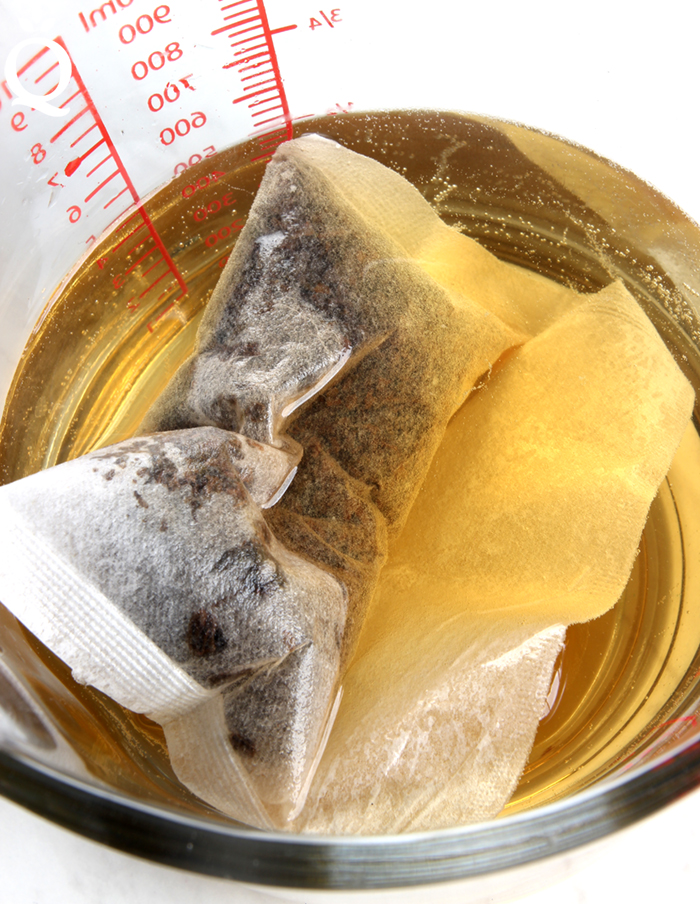
ONE: Slowly and carefully add the lye to the black tea and gently stir until the lye has fully dissolved. The mixture will be a brown color. Do not panic. That’s what the titanium dioxide is for. Set aside to cool.
TWO: Fully melt the coconut oil, olive oil, cocoa butter, matcha green tea butter, sweet almond oil, and palm oil. Remember to fully melt and then mix your entire container of palm oil before portioning. Once the lye water and the oils have cooled to 130 degrees or below (and are ideally within 10 degrees of each other), add the lye to the oils and stick blend until you have a thin trace. If you’d like a harder bar of soap that releases faster from the mold, you can add sodium lactate to the cooled lye water. Use 1 teaspoon of sodium lactate per pound of oils in the recipe. For this recipe, you’d add about 3.5 tsp. of sodium lactate.
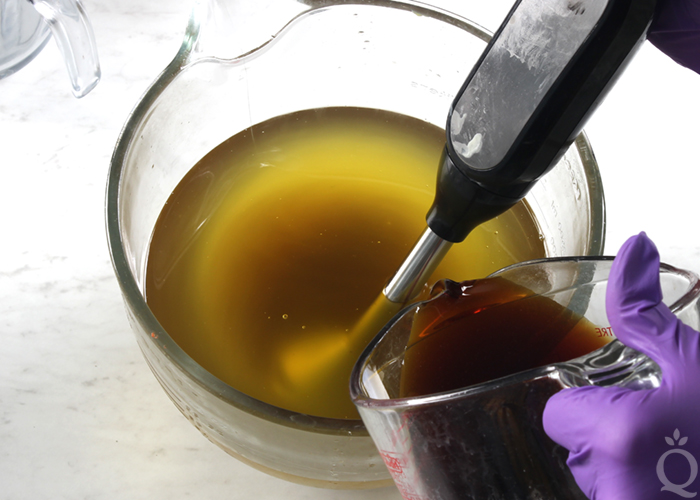
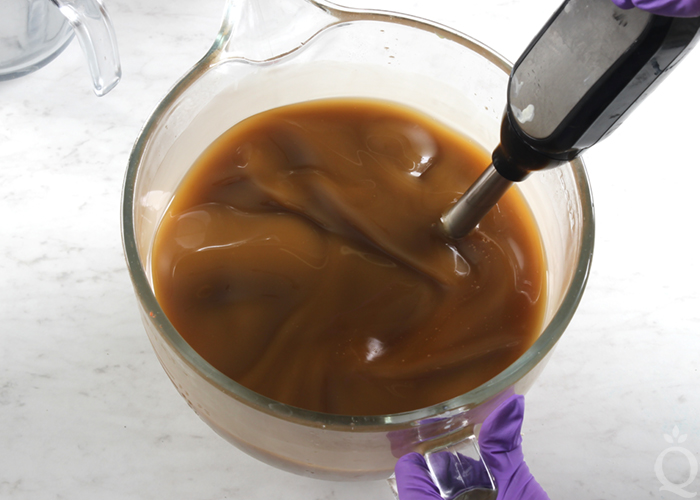
THREE: Once you reach a very thin trace, add all the Bergamot Black Tea Fragrance Oil. It’s okay to add the fragrance at the beginning because it behaves very well in soap.
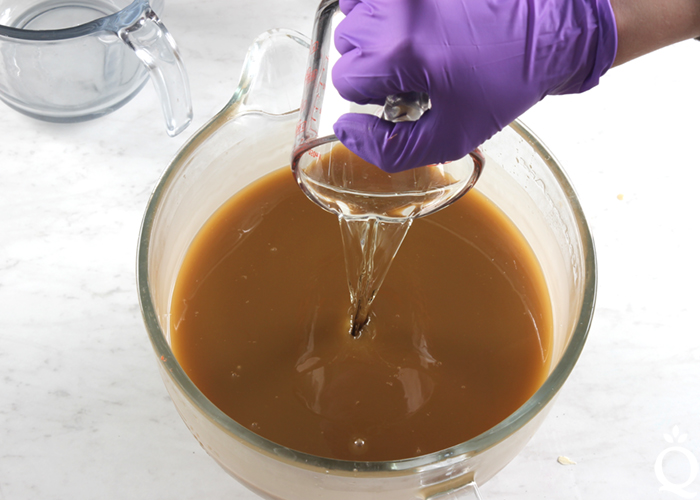
FOUR: Split off about 26 ounces of soap into a separate container. Add 2 teaspoons of dispersed activated charcoal, and use a whisk to fully mix in. Set aside.
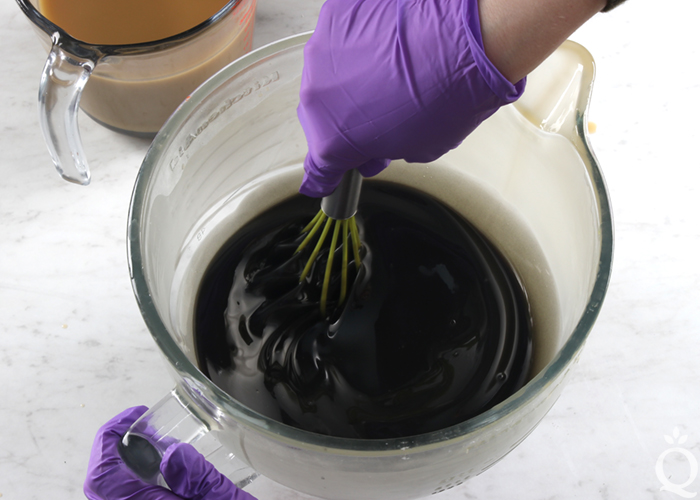 FIVE: Add all the dispersed titanium dioxide into the large amount of remaining soap. Use the stick blender to fully incorporate the titanium dioxide. Then split the batch in half. Each should weigh about 26 ounces. Add all the dispersed purple Brazilian clay to one container. Use the stick blender to incorporate the clay. Leave the other container of soap uncolored.
FIVE: Add all the dispersed titanium dioxide into the large amount of remaining soap. Use the stick blender to fully incorporate the titanium dioxide. Then split the batch in half. Each should weigh about 26 ounces. Add all the dispersed purple Brazilian clay to one container. Use the stick blender to incorporate the clay. Leave the other container of soap uncolored.
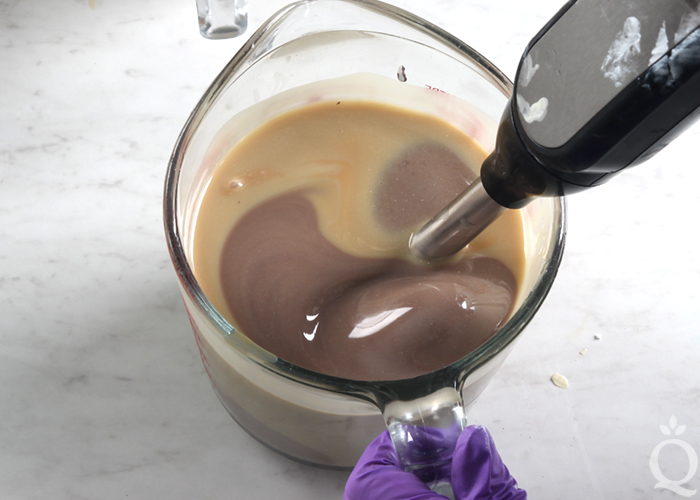
SIX: Now it’s time to start layering! First, make sure all the colors of soap are a medium to thick trace. Stick blend each from lightest to darkest until a medium to thick texture is achieved. Because they all have different amounts of various colorants, they may thicken at different rates.
SEVEN: Once you’re happy with the texture of each color, pour half of the uncolored soap into the mold and use a spoon to even it throughout the mold. Use the spoon to give the layer texture, because this design does not need exact straight layers.
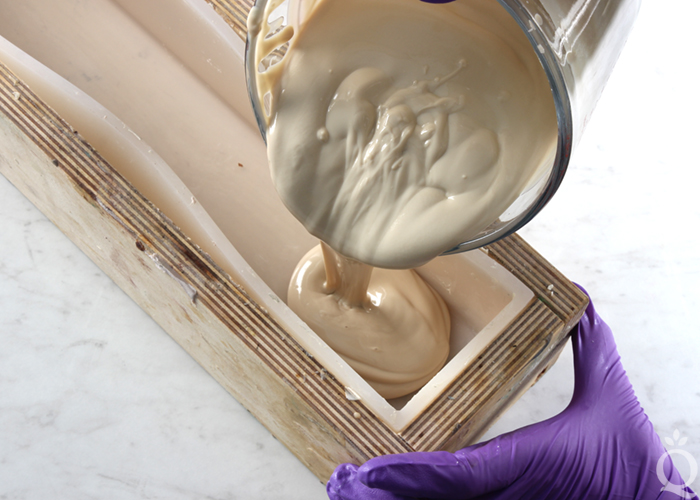 EIGHT: Pour half of the black soap onto the white. Be careful not to let the black soap fall through the first layer of white. Use a spoon to gently cover the white soap. Use the spoon to spread it evenly, and to give it texture.
EIGHT: Pour half of the black soap onto the white. Be careful not to let the black soap fall through the first layer of white. Use a spoon to gently cover the white soap. Use the spoon to spread it evenly, and to give it texture.
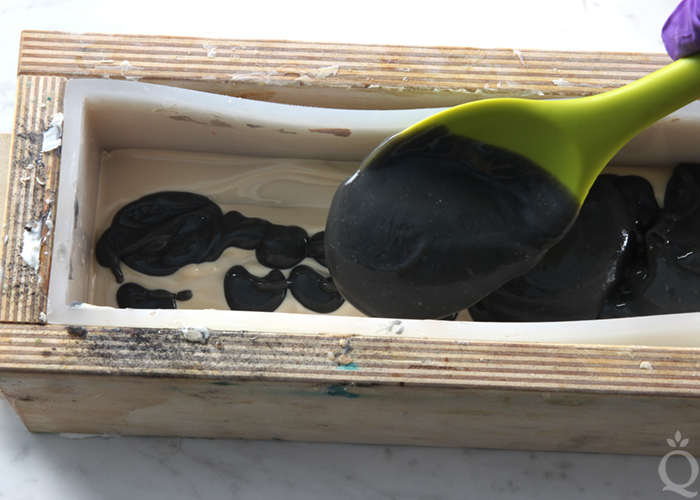
NINE: Cover the black soap with half of the purple soap. Again, use a spoon to spread it evenly and create texture. Tap the mold firmly on the counter to help evenly disperse the soap and get rid of bubbles.
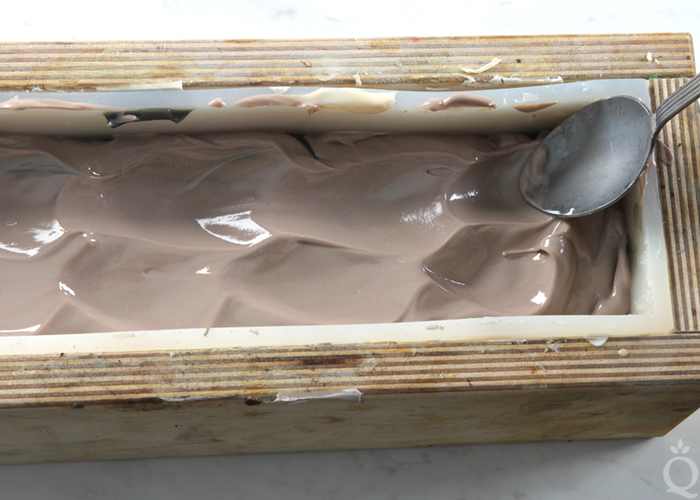
TEN: Continue to layer the soap into the mold with the same color sequence: white soap, black soap, purple soap. Use up all of the remaining soap for the second layer.
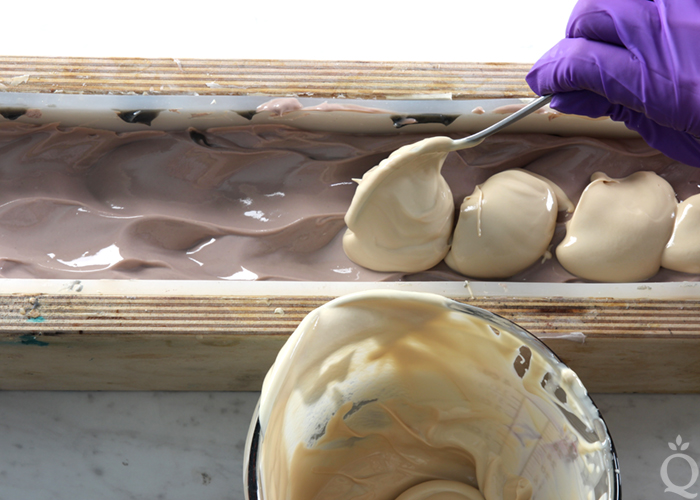
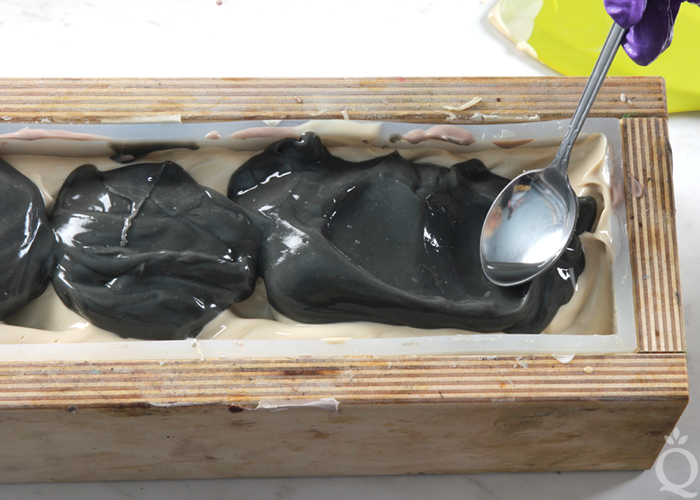
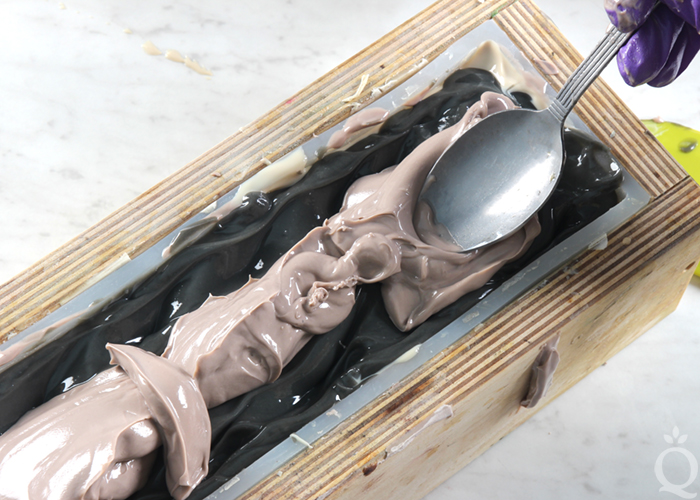
ELEVEN: Once the last of the purple soap is poured into the soap, use a spoon to mound the soap in the center and create peaks. There is no right or wrong way to do this, so just have fun with it!
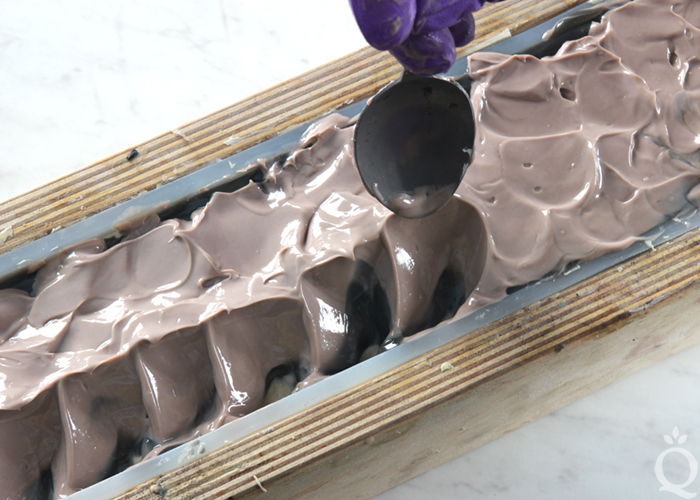
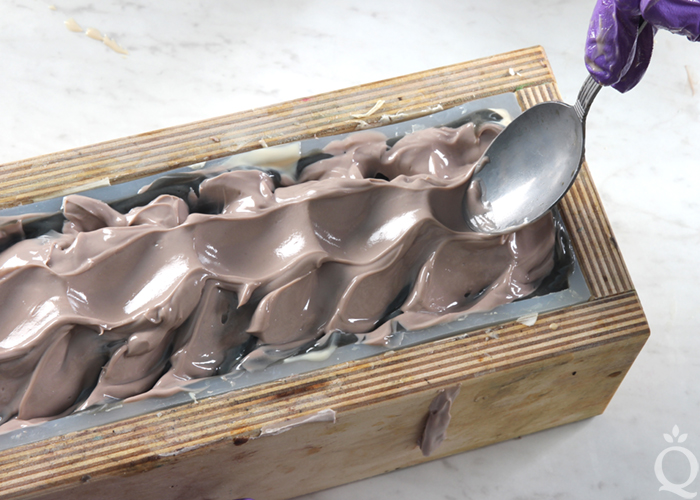
TWELVE: Once you’re happy with the top, sprinkle the used black tea leaves down the center of the soap. Lightly press them (with gloves on) into the soap to help them stick once cut. Spritz the top with 99% isopropyl alcohol to prevent soda ash. Because this soap has a tendency to form glycerin rivers, keep it cool. Do not cover or insulate. If you live in a hot climate, consider placing the soap in the fridge or freezer for several hours to keep it cool. After about 2-3 days, unmold the soap and cut into bars. Allow to cure for 4-6 weeks. Because it does have a heavy water discount, 4 weeks should do the trick. Enjoy!
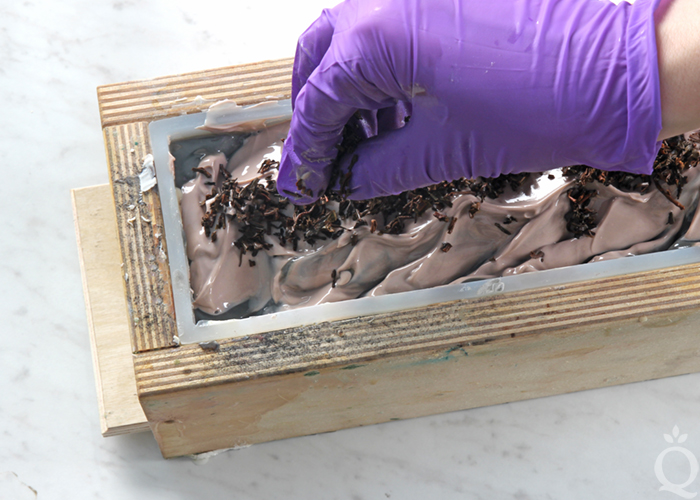
- 5 Pound Mold with Sliding Bottom
- Silicone Liner for 5 Pound Mold
- 2.7 oz. Cocoa Butter (5%)
- 13.5 oz. Coconut Oil (25%)
- 2.7 oz. Matcha Green Tea Butter (5%)
- 16.2 oz. Olive Oil (30%)
- 13.5 oz. Palm Oil (25%)
- 5.4 oz. Sweet Almond Oil (10%)
- 14.3 oz. Brewed Black Tea (20% water discount)
- 7.6 oz. Sodium Hydroxide Lye
- 2 oz. Bergamot Black Tea Fragrance Oil
- Titanium Dioxide
- Activated Charcoal
- Purple Brazilian Clay
- Black Tea Leaves (for the top & to brew tea)
- Large Sealable Tea Bag (for brewing tea)
Allow the tea to steep and cool for about 1 hour. Remove the tea bag and wait for the tea to cool to about 70 ° F. The cooler the mixture, the lighter the color of the lye mixture will be.If you’d like, you can also freeze the tea and add the lye to the frozen tea, similar to adding lye to milk, as shown here.
Measure out 14.3 ounces of tea. If you don’t have enough, add more distilled water. Save the tea leaves to place on top of the soap if you’d like. Place them on a paper towel to dry until you’re ready to use.
- Slowly and carefully add the lye to the black tea and gently stir until the lye has fully dissolved. The mixture will be a brown color. Do not panic. That’s what the titanium dioxide is for. Set aside to cool.
- Fully melt the coconut oil, olive oil, cocoa butter, matcha green tea butter, sweet almond oil, and palm oil. Remember to fully melt and then mix your entire container of palm oil before portioning. Once the lye water and the oils have cooled to 130 degrees or below (and are ideally within 10 degrees of each other), add the lye to the oils and stick blend until you have a thin trace. If you’d like a harder bar of soap that releases faster from the mold, you can add sodium lactate to the cooled lye water. Use 1 teaspoon of sodium lactate per pound of oils in the recipe. For this recipe, you’d add about 3.5 tsp. of sodium lactate.
- Once you reach a very thin trace, add all the Bergamot Black Tea Fragrance Oil. It’s okay to add the fragrance at the beginning because it behaves very well in soap.
- Split off about 26 ounces of soap into a separate container. Add 2 teaspoons of dispersed activated charcoal, and use a whisk to fully mix in. Set aside.
- Add all the dispersed titanium dioxide into the large amount of remaining soap. Use the stick blender to fully incorporate the titanium dioxide. Then split the batch in half. Each should weigh about 26 ounces. Add all the dispersed purple Brazilian clay to one container. Use the stick blender to incorporate the clay. Leave the other container of soap uncolored.
- Now it’s time to start layering! First, make sure all the colors of soap are a medium to thick trace. Stick blend each from lightest to darkest until a medium to thick texture is achieved. Because they all have different amounts of various colorants, they may thicken at different rates.
- Once you’re happy with the texture of each color, pour half of the uncolored soap into the mold and use a spoon to even it throughout the mold. Use the spoon to give the layer texture, because this design does not need exact straight layers.
- Pour half of the black soap onto the white. Be careful not to let the black soap fall through the first layer of white. Use a spoon to gently cover the white soap. Use the spoon to spread it evenly, and to give it texture.
- Cover the black soap with half of the purple soap. Again, use a spoon to spread it evenly and create texture. Tap the mold firmly on the counter to help evenly disperse the soap and get rid of bubbles.
- Continue to layer the soap into the mold with the same color sequence: white soap, black soap, purple soap. Use up all of the remaining soap for the second layer.
- Once the last of the purple soap is poured into the soap, use a spoon to mound the soap in the center and create peaks. There is no right or wrong way to do this, so just have fun with it!
- Once you’re happy with the top, sprinkle the used black tea leaves down the center of the soap. Lightly press them (with gloves on) into the soap to help them stick once cut. Spritz the top with 99% isopropyl alcohol to prevent soda ash. Because this soap has a tendency to form glycerin rivers, keep it cool. Do not cover or insulate. If you live in a hot climate, consider placing the soap in the fridge or freezer for several hours to keep it cool. After about 2-3 days, unmold the soap and cut into bars. Allow to cure for 4-6 weeks. Because it does have a heavy water discount, 4 weeks should do the trick. Enjoy!
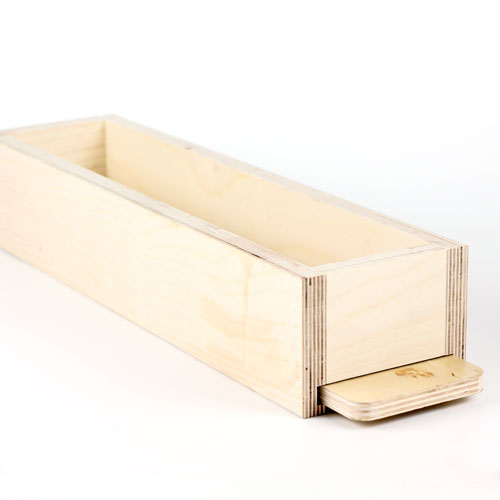

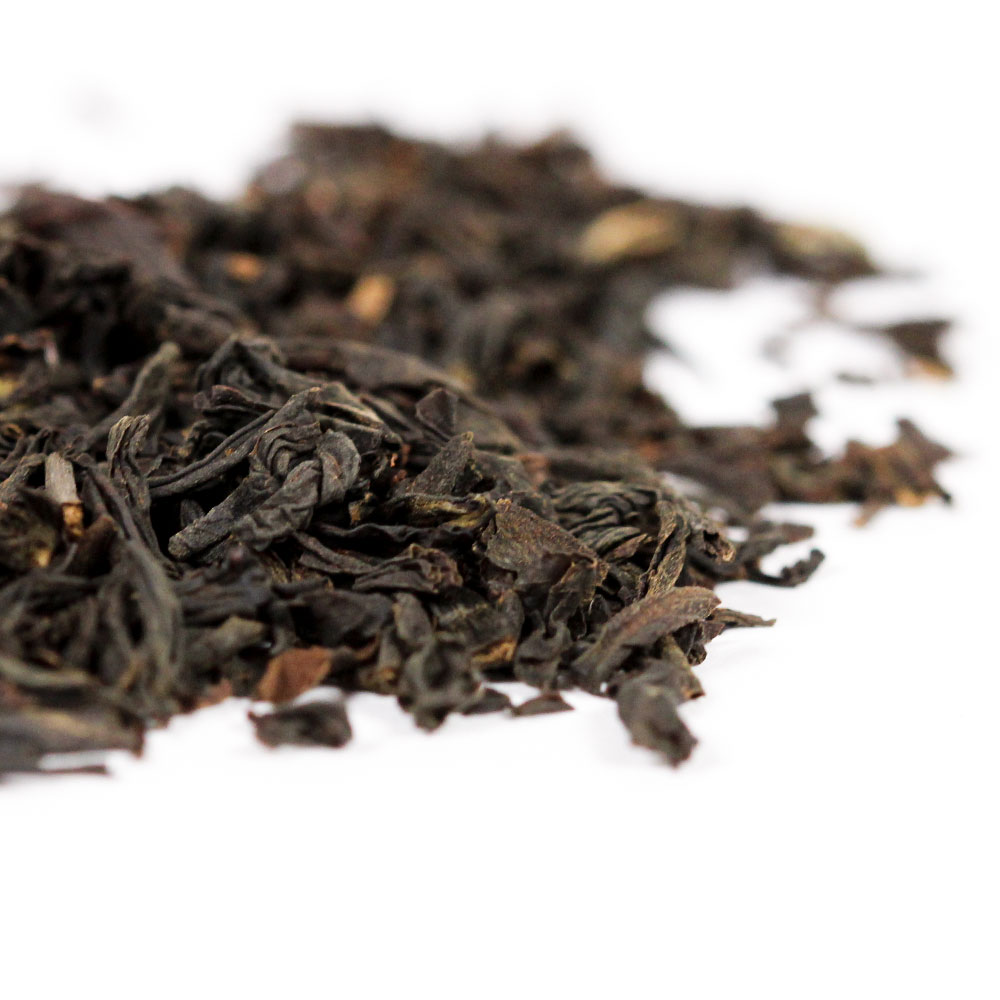
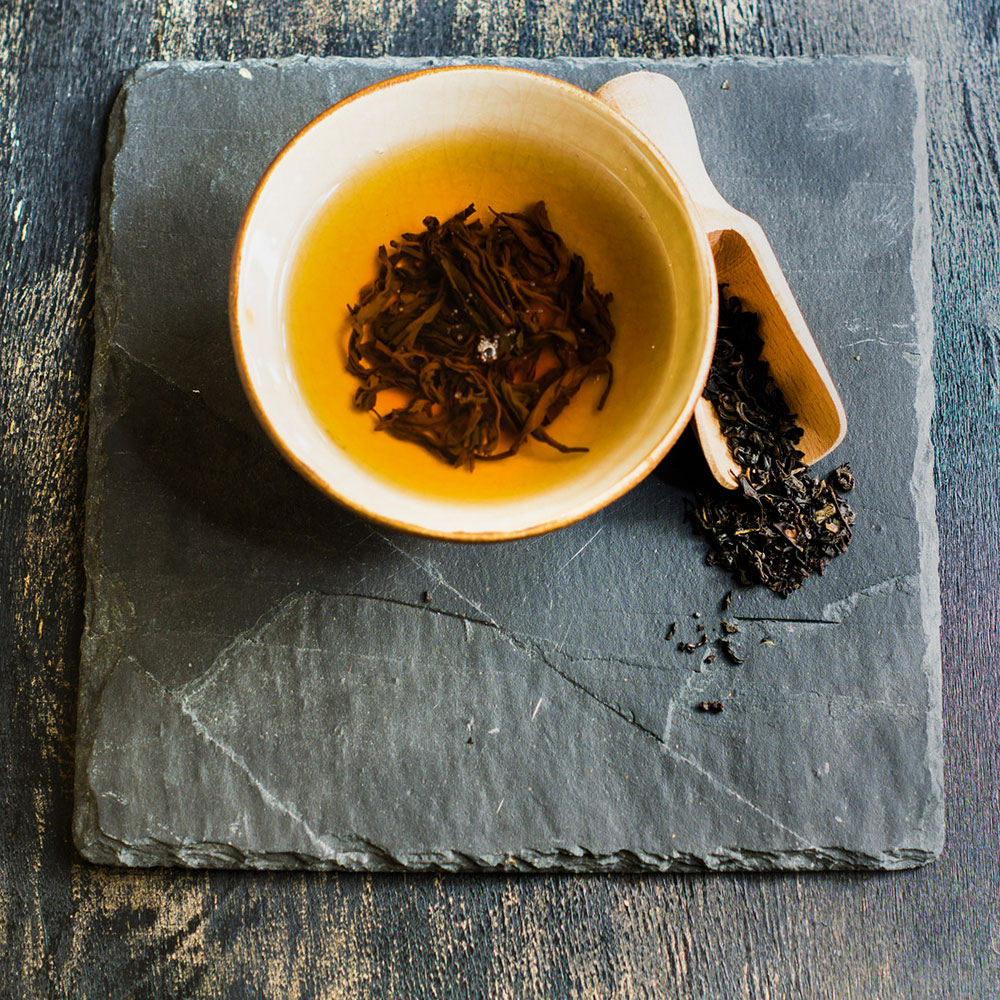
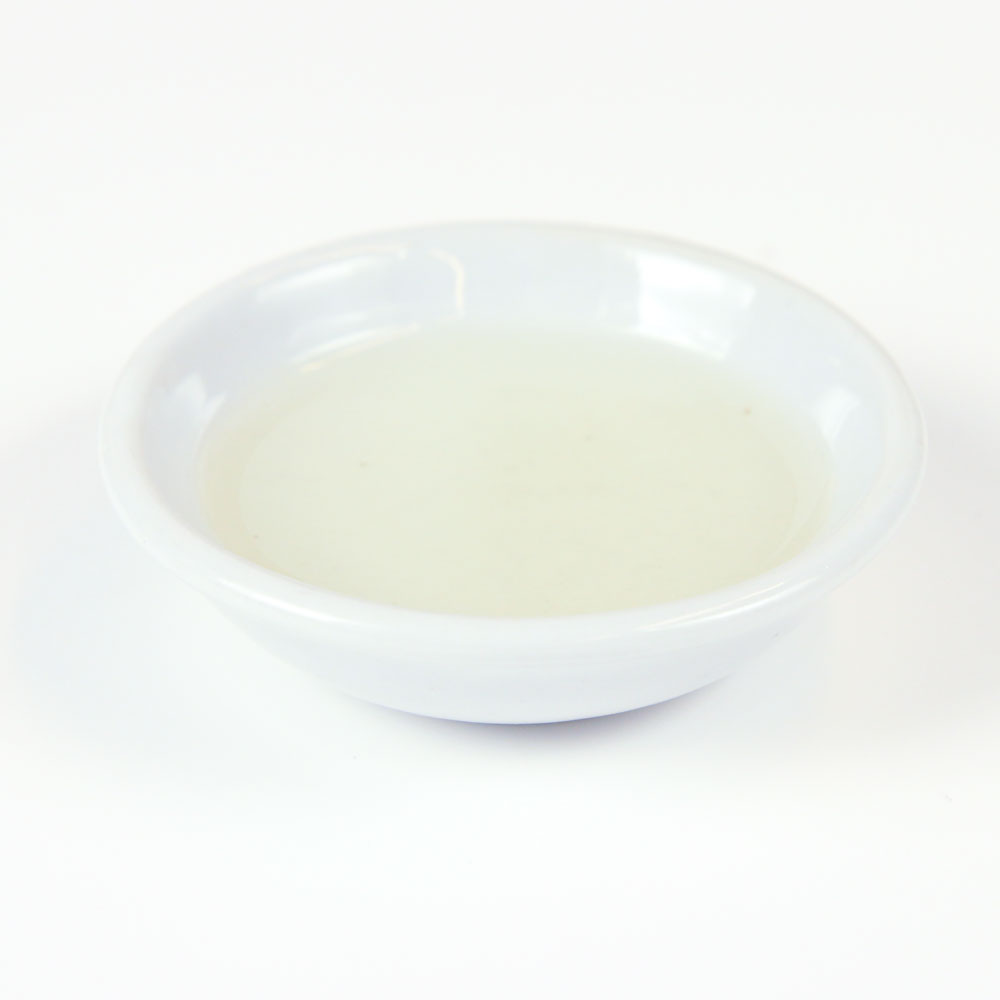
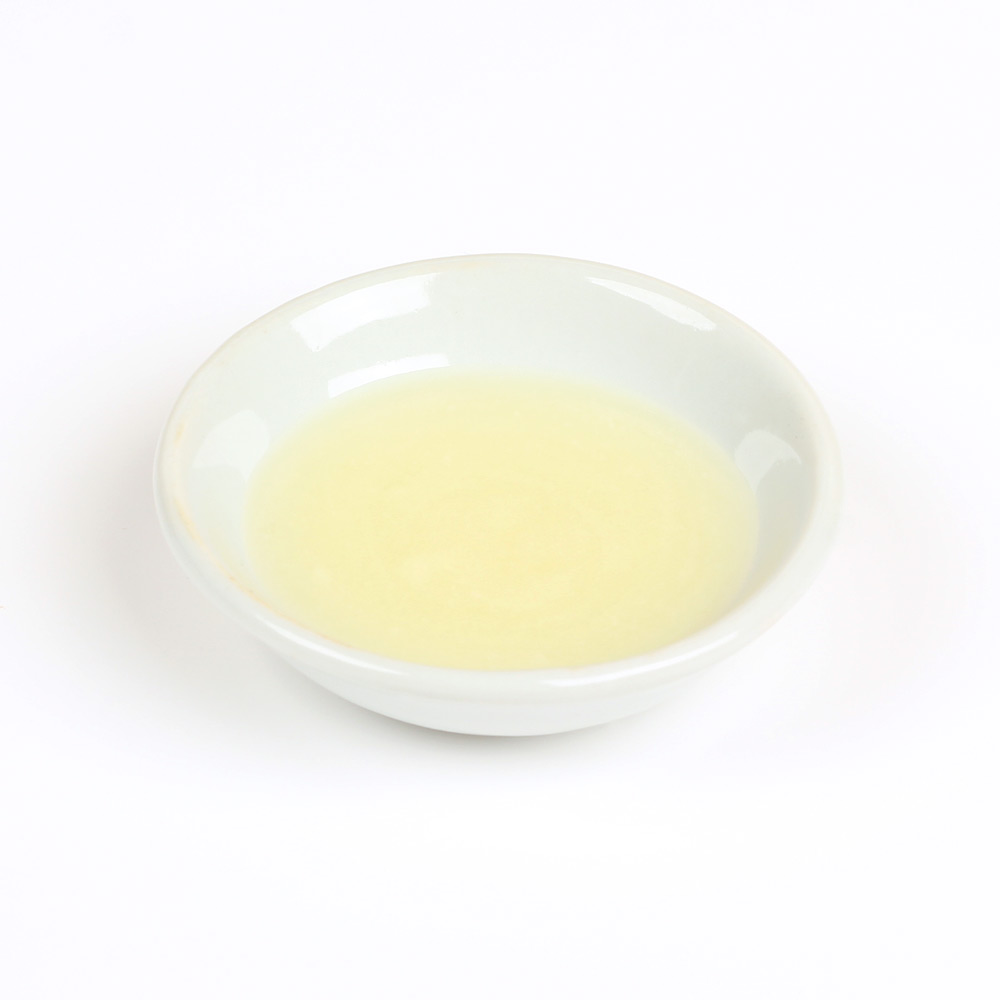
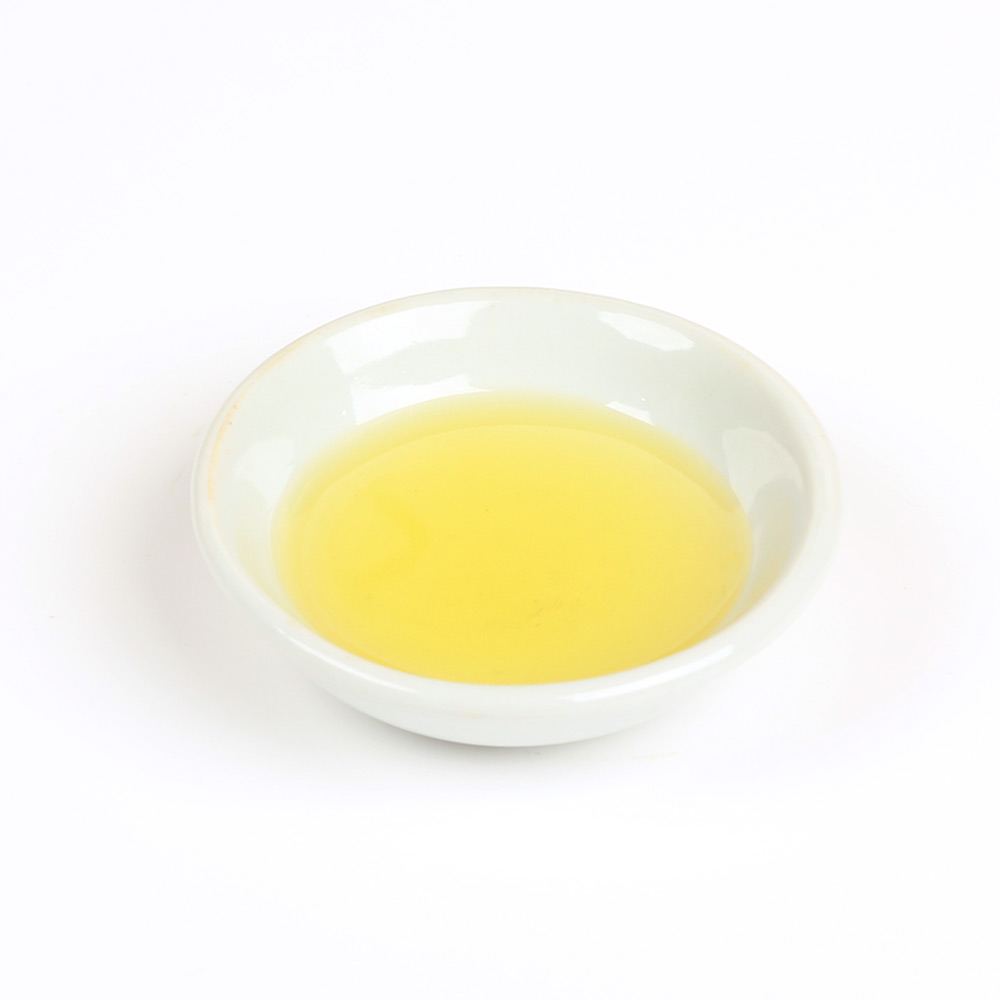
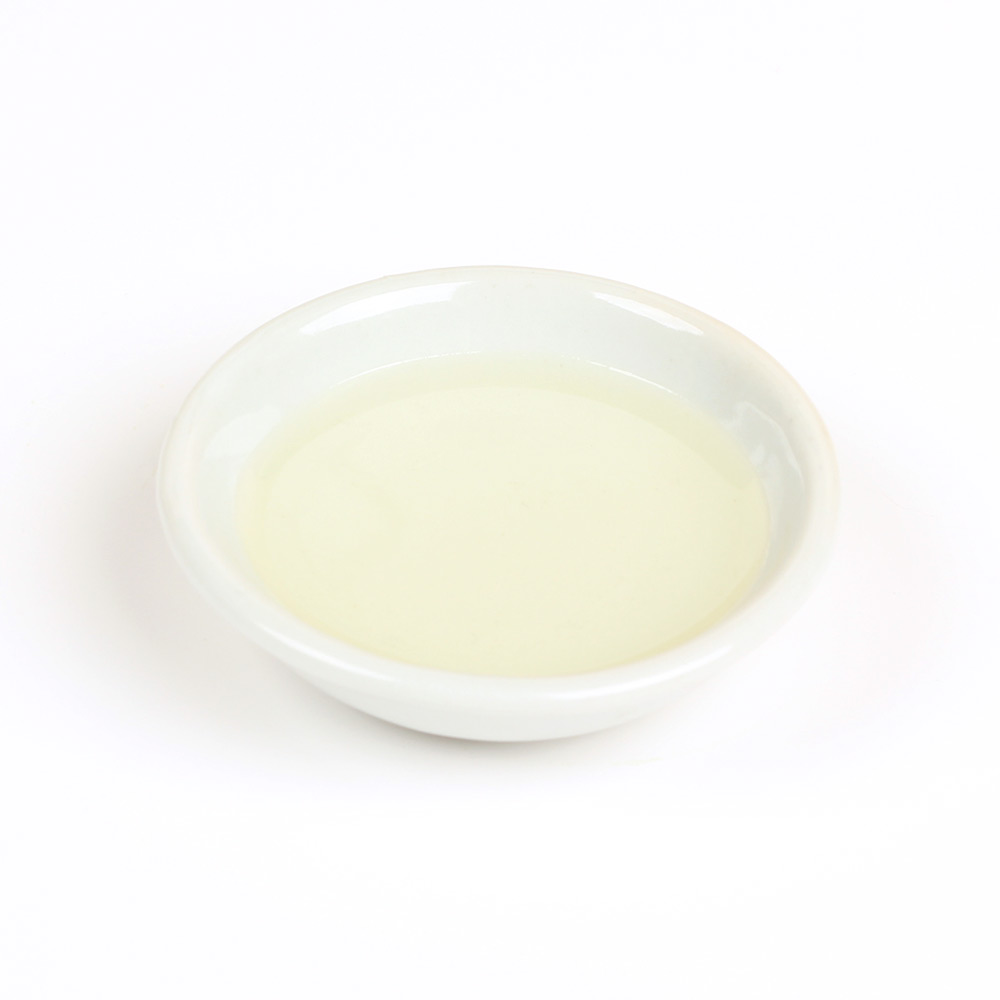
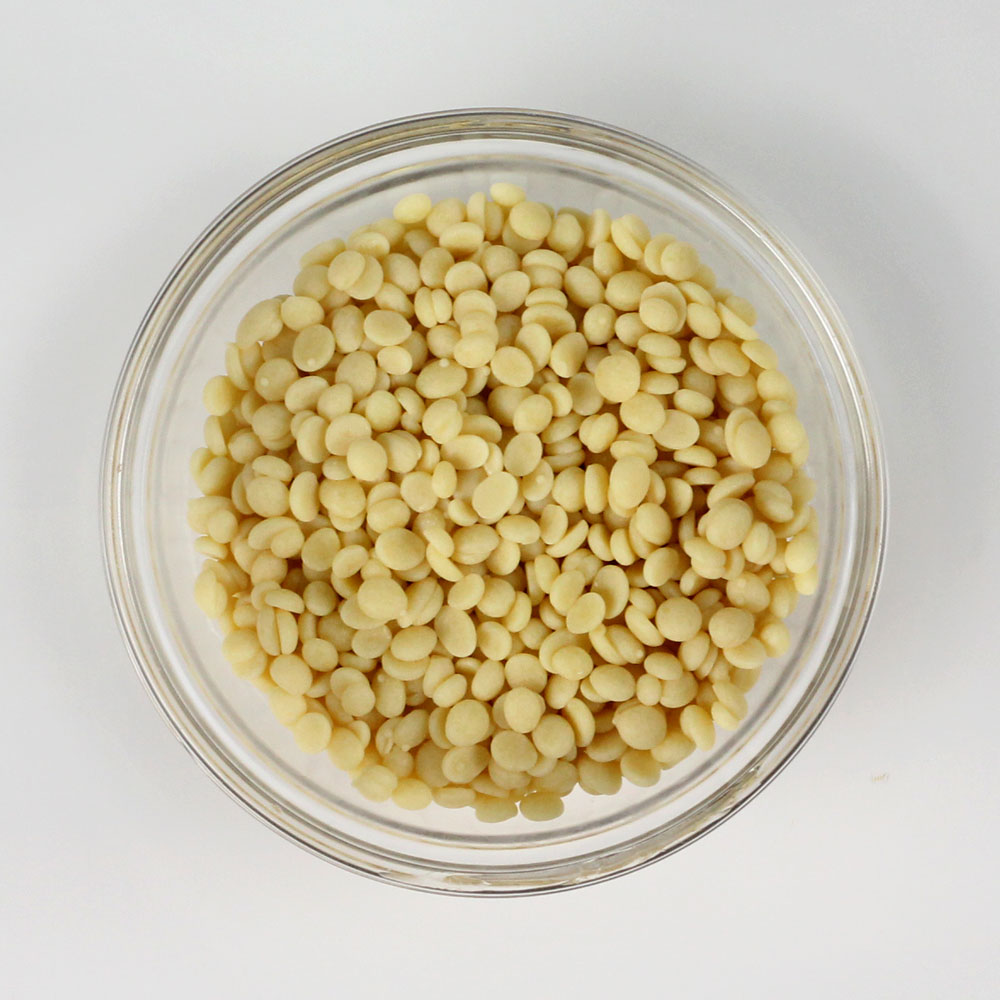
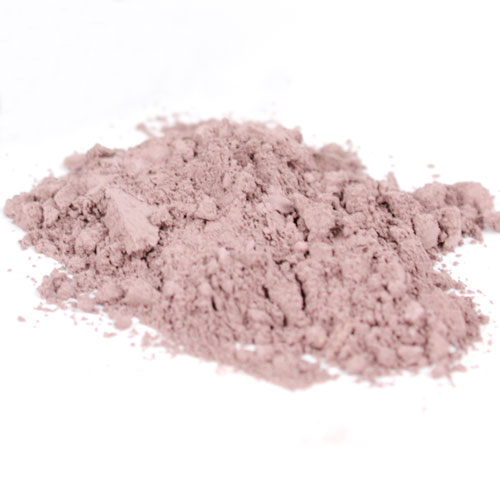
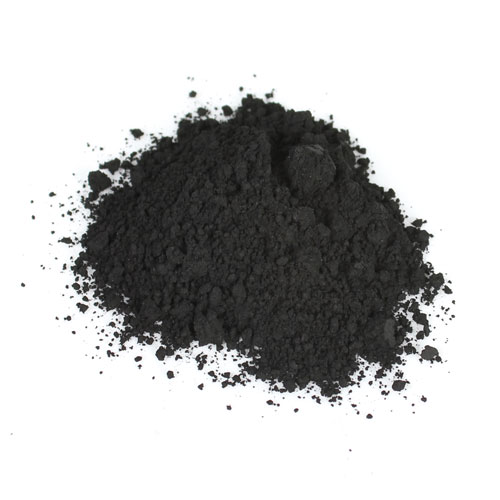

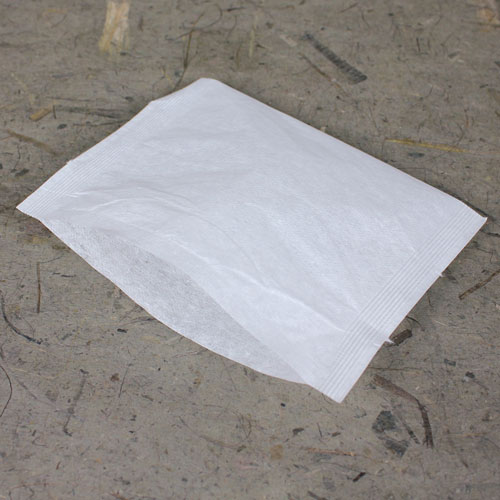
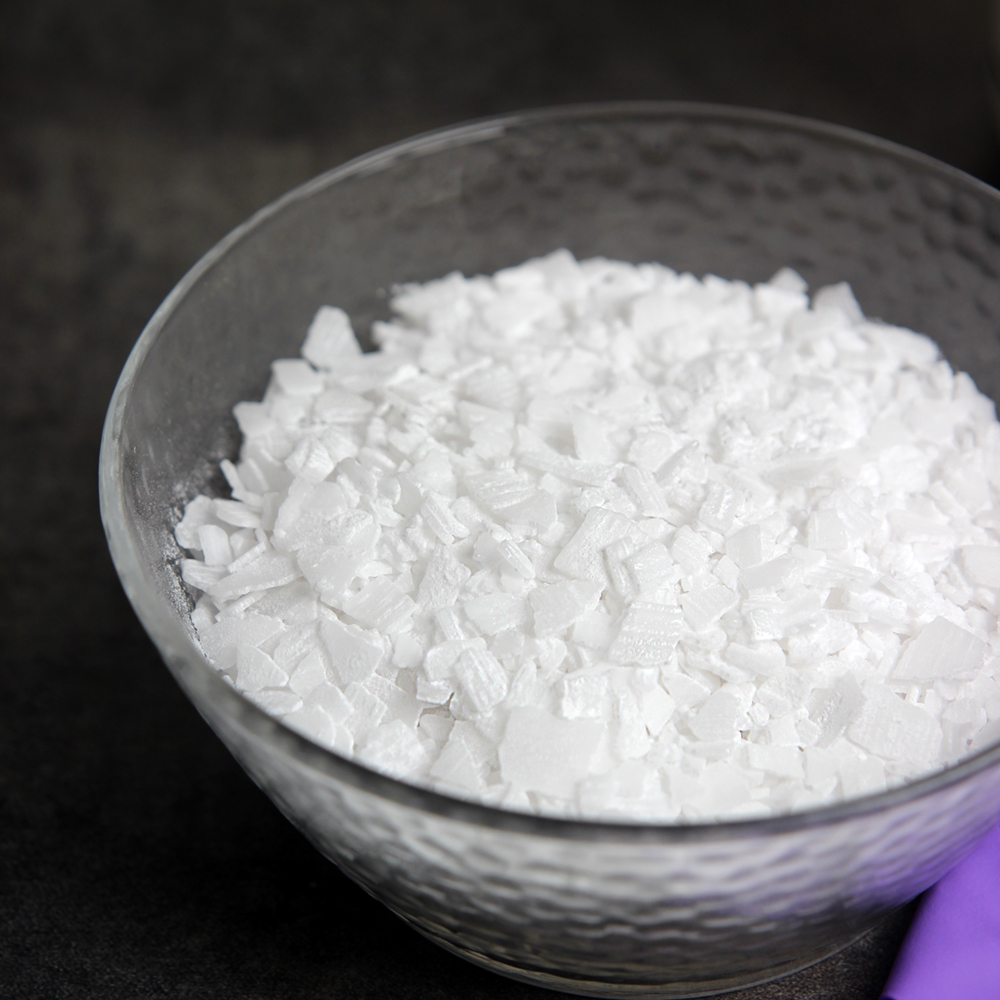

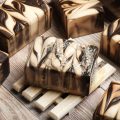

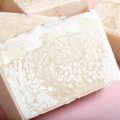
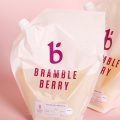
Hi. I am new to soap making and am loving it! I live in India (for another year) and some ingredients are very difficult to find here. Palm oil is very expensive and not easy to get. I have been using buffalo tallow as a substitute, but not sure if it is being calculated correctly as no lye calculator has buffalo tallow on it’s ingredient list…. do you know which tallow it would be closest to? Also, I have a very small supply of the purple brazilian clay, which I can’t get here. But I do have multani clay. Won’t get the beautiful purple, but do you know anything about the multani clay and if/what it can be used as a substitute for? Thanks!
We haven’t worked with those ingredients a lot so I’m not sure. You may contact the manufacturer to see if you can get a SAP value for the buffalo tallow and usage instructions for the clay.
If the manufacturer doesn’t have the SAP value, one of the tallow categories on our Lye Calculator may be close: https://www.brambleberry.com/Pages/Lye-Calculator.aspx
Also, this post goes over general usage instructions for clay: https://www.soapqueen.com/bath-and-body-tutorials/tips-and-tricks/how-to-use-clay-in-bath-beauty-projects/
Hello,
Is there a blend of essential oils that will give me a similar scent?
Thank you for your help!
Black Tea Fragrance Oil is made up of quite a few components, so you won’t be able to get the exact scent with essential oils. You can try blending a few for something similar below. Bergamot, orange, cedarwood, and anise are good options.
Bergamot: https://www.brambleberry.com/Bergamot-Pure-Essential-Oil-P3414.aspx
10X Orange: https://www.brambleberry.com/Orange-10X-Essential-Oil-P4441.aspx
Cedarwood: https://www.brambleberry.com/Cedarwood-Essential-Oil-P4897.aspx
Anise: https://www.brambleberry.com/Anise-Essential-Oil-P3829.aspx
You may also try a touch of rosemary for some earthiness: https://www.brambleberry.com/Rosemary-Essential-Oil-P3817.aspx
Learn more about blending essential oils here: https://www.soapqueen.com/bath-and-body-tutorials/tips-and-tricks/how-to-blend-essential-oils-safely/
Thank You! 🙂
I want to use some matcha green tea that I have in the pantry, and was looking for a recipe for CP soap, but all I could find was this which uses matcha green tea butter. Can somebody tell me how to include the tea in a recipe, and if it’s a good idea in terms of coloring and beneficial properties. Thank you : )
You can use matcha powder in your soap, but it will turn brown. You can still add it for the benefits though – I believe matcha is antioxidant rich. You can mix 1 teaspoon with 1 tablespoon of distilled water, then add 1 teaspoon at a time at trace. If you want a greener shade, you can add Green Chrome using the same method (with oil instead of water): https://www.brambleberry.com/Green-Chrome-Oxide-Pigment-P4042.aspx
I do have green chrome oxide ! I will add both my matcha green tea and the oxide to impart a nice green color to my soap. THANK you so much Kelsey !! I appreciate your speedy reply to my question : )
Hi,
I would love to make this soap without Palm oil. How can I adapt the recipe?
thanks for all the inspiration!
Babassu oil can be used in place of palm oil: https://www.brambleberry.com/Babassu-Oil–P6807.aspx
You can also add a hard oil like cocoa butter up to 15% to add firmness like palm oil does. Coconut oil or tallow up to 33% work as well. Read more about common oils and what properties they add to soap here: http://www.soapqueen.com/bath-and-body-tutorials/tips-and-tricks/free-beginners-guide-to-soapmaking-common-soapmaking-oils/
This post on substituting oils has some great information too: http://www.soapqueen.com/bath-and-body-tutorials/tips-and-tricks/how-to-substitute-oil-in-cold-process-recipes/
I tried making the soap using flower green tea to get the natural fragrance. The result is the flower scents is very faint. Is it better to infuse in oil rather than infuse it in the water to retain its fragrance and other beneficial properties of the flower tea?
Infusions create little to no scent in the final bars. That’s the same for water and oil infusions. To get a nice scent, we recommend adding a fragrance oil. This Green Tea Fragrance Oil smells amazing in soap: https://www.brambleberry.com/Green-Tea-Fragrance-Oil-P3892.aspx
Find out how much to add with our Fragrance Calculator: https://www.brambleberry.com/Pages/Fragrance-Calculator.aspx
I bought the kit immediately after finding this! I was very intimidated with the steps and hunkered down and did it.
It turned out beautiful! Everyone thinks it looks and smells delicious.
I works wonders on my face (adult acne). I lather and leave it on my face for a minute and rinse. No stickiness, just running low on the stock because I am using for myself!
I am looking for more recipes to use the 5 lb mold now.
Oh so glad you enjoyed this recipe! The steps can feel intimidating at first but once you get going it’s really fun. I’ll link a few recipes made in the 5 pound Wood Mold you may like below.
Moonstone Cold Process Soap: https://www.soapqueen.com/bath-and-body-tutorials/moonstone-cold-process-soap/
Watermelon Cold Process Soap: https://www.soapqueen.com/bath-and-body-tutorials/moonstone-cold-process-soap/
Rose Quartz Cold Process Soap: https://www.soapqueen.com/bath-and-body-tutorials/cold-process-soap/rose-quartz-cold-process-soap-tutorial/
Hi,
I designed a soap recipe using soapcalc. Cleansing number of my recipe is about 32. Does it make any problem in my soap? Does it have any negative effects on skin?
Please help me.
Thanks,
We don’t use INS numbers because we don’t find they accurately predict how a soap will feel on the skin. Learn more about that here: https://www.soapqueen.com/bath-and-body-tutorials/cold-process-soap/ins-numbers-for-soapmaking/
Can you tell me what’s in your recipe? I can let you know a bit more about what to expect, and what to adjust if you’d like it to be more cleansing.
-Kelsey with Bramble Berry
I used 50% coconut oil and 50% canola oil for my soap. Is that a good choice for making soap? What do you recommend?
Thanks,
The 50% coconut oil can be pretty harsh in a recipe. Coconut is so cleansing it can be drying on the skin, so you’ll want to lower that to 33% or increase the superfat to around 10%. You can also add castor oil at 2-5%, that adds cleansing properties and also really nice lather.
Learn more about common soapmaking oils and how much to use here: http://www.soapqueen.com/bath-and-body-tutorials/tips-and-tricks/free-beginners-guide-to-soapmaking-common-soapmaking-oils/
This post on formulating recipes is helpful as well: http://www.soapqueen.com/bath-and-body-tutorials/tips-and-tricks/formulating-cold-process-recipes/
And this post has more on superfat: http://www.soapqueen.com/bath-and-body-tutorials/cold-process-soap/superfatting-soap-an-explanation-2/
-Kelsey with Bramble Berry
Thanks for your reply,
What do you think about 40% coconut oil and 60% canola oil?
Hi,
If i prefered not using the titanium dioxide in my soaps, what would be the effects of removing it from your receipy. i want to use only 100% natural ingredients. I know it is found in nature and only purified but there is some contraversy in it with some possible danger. Should I replace it or just remove it and if so does it change the concentration of any of the ingredients?
You can leave it out, but the color of the soap will be affected. The titanium dioxide whitens the soap, so it will have an overall browinsh/tan color. Kaolin clay can help whiten that soap (just not as much as the titanium dioxide). Learn how to work with clays here: https://www.soapqueen.com/bramble-berry-news/sunday-night-spotlight-brazilian-clay/
We used kaolin clay in this cold process recipe: https://www.soapqueen.com/bath-and-body-tutorials/cold-process-soap/sea-clay-swirl-cold-process/
-Kelsey with Bramble Berry
Kaolin clay: https://www.brambleberry.com/Kaolin-Clay-P3235.aspx
I hope this isn’t a dumb question but why does titanium dioxide cause glycerin rivers???
I believe the reason is not that titanium dioxide causes them necessarily, just that they’re more visible. The rivers are congealed clusters of glycerin, which are more visible with opaque pigments rather than lighter micas. Learn more about them here: https://www.soapqueen.com/bath-and-body-tutorials/tips-and-tricks/river-runs-deep-explanation-glycerin-rivers/
-Kelsey with Bramble Berry
Oh, also! I want to make this in my 10 in silicone mold so I’m running the percentages through the lye calculator. Does this recipe have a superfat? And for the 20% water discount, would I just subtract 20% from the water amount indicated in the lye calculator? Thanks!
This recipe has a 5% superfat. Also, that is correct for the water discount. Find the full water amount from our calculator, then multiply it by .8 (80% leftover from the 20% discount). That will give you the water amount. 🙂
Lye Calculator: https://www.brambleberry.com/Pages/Lye-Calculator.aspx
Learn more about discounting here: http://www.soapqueen.com/bath-and-body-tutorials/tips-and-tricks/water-discounting-cold-process-soap-how-why/
-Kelsey with Bramble Berry
Hi, I want to make this but I don’t have matcha butter. Could I use shea butter as an acceptable replacement? Thanks!
Avocado or coffee butter are good substitutions because they have a similar feel to the matcha butter. If you don’t have those on hand, you can use shea butter. Just keep in mind shea butter is a bit more firm than matcha, so the bars will be firmer overall.
Avocado butter: https://www.brambleberry.com/Avocado-Butter-Solid-P3207.aspx
Coffee butter: https://www.brambleberry.com/Coffee-Butter-P3444.aspx
Remember to run your recipe through the Lye Calculator after any substitutions: https://www.brambleberry.com/Pages/Lye-Calculator.aspx
Learn more about substituting oils here: http://www.soapqueen.com/bath-and-body-tutorials/tips-and-tricks/how-to-substitute-oil-in-cold-process-recipes/
-Kelsey with Bramble Berry
Hello,
I did everything as in the recipe however after taking it to shower the soap leaves very sticky feeling on my skin. Is there anything that can help to prevent this ?
It does go away after drying but I really hope that it would make a great feeling during the shower as well.
Thanks alot 🙂
fon
Also I have done some readings , can I add sodium cocoyl Isrthionate (SCI) to my soap? For gentle and silky feelings ?
if so, can you recommend how to incorporate into our soap recipe ?
Thank you again
fon
How long did you let that soap cure before using? Also, we haven’t worked with SCI so I’m not sure how to use it in soap. You can use silk though, it feels amazing in the bars. Learn how to work with it here: https://www.soapqueen.com/bramble-berry-news/sunday-night-spotlight-liquid-silk-tussah-silk-fibers/
-Kelsey with Bramble Berry
I always seem to need titanium dioxide in my soap bc it always looks yellowish I have been using the lots of lather quick mixes . So will I always have to worry about the rivers , if I’m adding the TD to a 48 oz soap how much is safe to add to get atleast a cream color and avoid the rivers??
If you have a lot of titanium dioxide in the recipe, there is a chance for glycerin rivers. However, things like a water discount and cooler temperatures will help prevent them. You can start with a 10-15% discount and soap around 110F. Then, prepare about 2 teaspoons of titanium dioxide into 2 tablespoons of oil. Add 1 dispersed teaspoon at a time until you get a color you like. As your soap sits, if you notice it getting hot, pop it in the fridge or freezer for 5-24 hours. That should give you a nice color and prevent the glycerin rivers.
Get more tips in this post: https://www.soapqueen.com/bath-and-body-tutorials/tips-and-tricks/river-runs-deep-explanation-glycerin-rivers/
This post talks more about water discounting: http://www.soapqueen.com/bath-and-body-tutorials/tips-and-tricks/water-discounting-cold-process-soap-how-why/
-Kelsey with Bramble Berry
Do larger amounts of titanium oxide typically result in glycerin rivers?
Yes, a large amount of titanium dioxide can cause glycerin rivers. It can also be caused by heat or the fragrance you use. A water discount helps prevent them. Learn mroe here: https://www.soapqueen.com/bath-and-body-tutorials/tips-and-tricks/river-runs-deep-explanation-glycerin-rivers/
-Kelsey with Bramble Berry